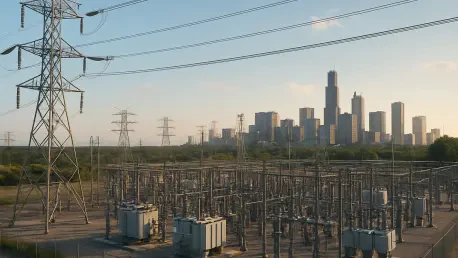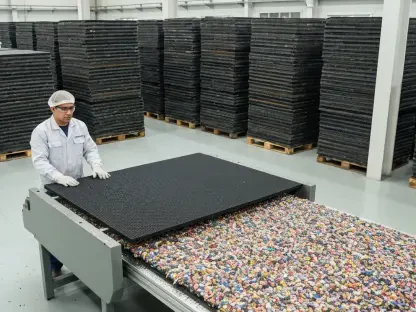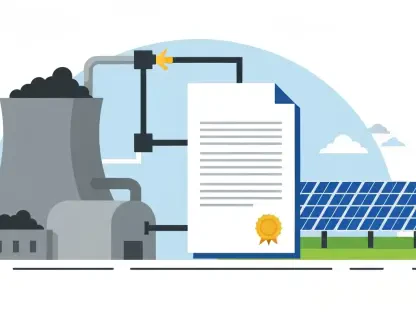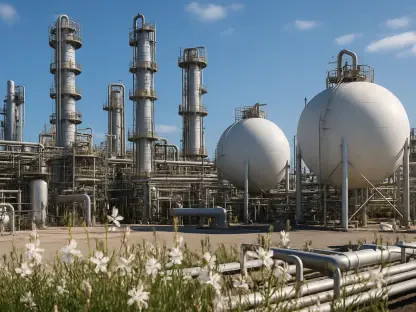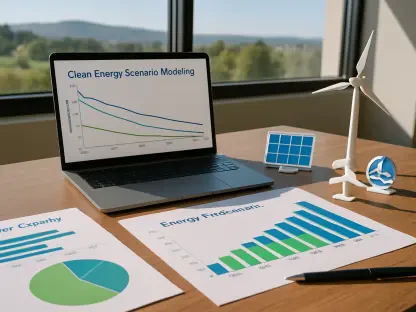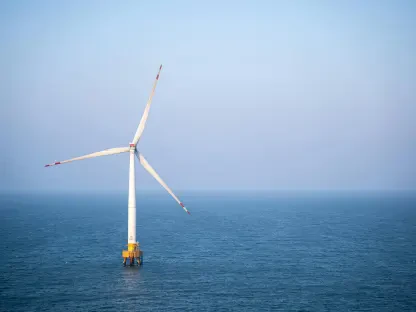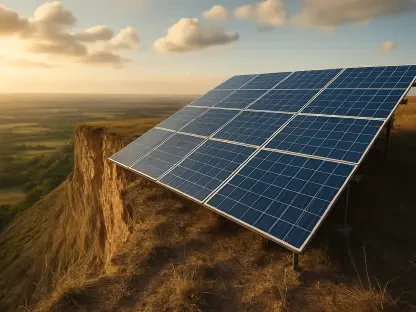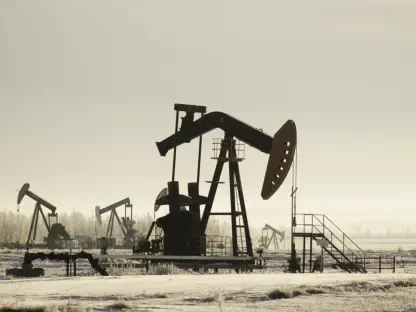I’m thrilled to sit down with Christopher Hailstone, a seasoned expert in energy management and renewable energy, whose deep understanding of electricity delivery and grid reliability offers invaluable perspectives. With a career dedicated to strengthening the backbone of America’s power systems, Christopher provides critical insights into the urgent challenges facing our energy infrastructure. Today, we’ll explore the vulnerabilities in our grid due to reliance on foreign supply chains, the economic and security implications of offshoring critical materials, and the path forward through reshoring and innovation.
Can you explain why America’s energy infrastructure is at such a critical juncture right now?
Absolutely. Our grid is under immense pressure from a perfect storm of factors. Surging demand from electrification, the rapid growth of AI and data centers, and the increasing frequency of extreme weather events are all pushing our aging infrastructure to its limits. Much of our grid was built decades ago and wasn’t designed for these modern challenges. We’re seeing energy loss in transmission as high as 8-12%, which is unsustainable when every watt counts. Without a radical shift to modernize and expand, we risk frequent outages and an inability to support future growth, especially in cutting-edge fields like AI where reliable power is non-negotiable.
What are some of the specific pressures, like AI or weather, that are straining the grid the most?
AI and data centers are huge energy hogs. They require consistent, high-capacity power to operate, and their growth is exponential—think of the server farms powering machine learning models. At the same time, extreme weather events, like heat domes and storms, are testing the grid’s resilience. These events spike demand for cooling or heating while simultaneously damaging infrastructure, leading to blackouts. Both of these pressures expose how outdated our systems are; we simply don’t have the capacity or smart management tools to handle these simultaneous demands effectively.
How does the current state of our grid stack up against future energy needs?
Frankly, it’s nowhere close. The current grid is a patchwork of old technology that struggles with today’s demands, let alone tomorrow’s. Future needs—driven by electrification of transport, industrial growth, and renewable integration—require a grid that’s not just bigger but smarter. We need real-time monitoring, rapid response to fluctuations, and seamless integration of wind and solar. Right now, we’re playing catch-up, and without bold investments, we’ll fall further behind, risking both economic competitiveness and energy security.
Can you break down the key findings from the U.S. Department of Energy’s recent Grid Reliability Report?
The report is a wake-up call. It highlights that our reliance on outdated infrastructure is a ticking time bomb. It points to the inability of the current grid to meet growing demand or withstand disruptions, whether from natural disasters or cyberattacks. The report stresses that modernization isn’t optional—it’s urgent. It also underscores the need for digital tools and advanced equipment to reduce energy loss and improve reliability. Essentially, it’s saying that sticking to the status quo isn’t just inefficient; it’s a direct threat to our ability to keep the lights on.
Why are critical materials like magnets and dielectric film so essential to grid reliability?
These materials are the unsung heroes of our power systems. Magnets and rare-earth minerals are key to generating and transmitting power efficiently, especially in renewable technologies like wind turbines. Dielectric film, used in capacitors, is crucial for stabilizing power flow. It helps condition electricity, convert between AC and DC, and manage demand spikes to prevent outages. Without these materials, our grid can’t function reliably. They’re foundational to everything from everyday electricity to national defense systems, making their availability a matter of both economic and security importance.
Can you simplify what dielectric film does for our audience?
Sure. Think of dielectric film as a super-thin, specialized plastic layer inside capacitors, which are components that help manage electricity in the grid. This film acts like a barrier that stores and releases energy to keep power flowing smoothly. It prevents surges or drops that could cause blackouts and ensures that the electricity reaching your home or business is stable. Without it, the grid would be prone to constant failures, especially during high-demand moments like heatwaves.
What are the consequences of the U.S. not producing enough of these critical materials domestically?
It’s a massive vulnerability. Since we rely heavily on foreign supply chains—especially China, which produces 75% of capacitor film—we’re at risk of disruptions that could halt grid repairs or upgrades. If those supplies are cut off, whether due to geopolitical tensions or trade issues, we’d face delays in fixing transformers or capacitors, leading to blackouts and industrial downtime. It’s not just a logistical problem; it’s a national security issue because our energy independence is compromised when we can’t source these essentials at home.
What could happen if our foreign supply of materials like capacitor film gets disrupted?
The impact would be immediate and severe. A cutoff could mean we can’t replace failing grid components quickly, leading to widespread power outages. Industries would grind to a halt, data centers powering AI would go offline, and everyday life would be disrupted with blackouts. Even partial disruptions cause delays and cost spikes for utilities, which ultimately hit consumers with higher bills and less reliable service. It’s a domino effect that could cripple our economy and expose us to external leverage in times of crisis.
How does offshoring these materials cost the U.S. economy nearly $200 billion annually, and why is this a problem?
That $200 billion represents money spent overseas on critical materials like dielectric film instead of investing it in American manufacturing. It’s an economic drain because it means we’re funding foreign economies while neglecting our own industrial base. This outflow stifles job creation and innovation here at home. It’s a problem because it weakens our economic resilience and leaves us dependent on others for materials vital to our grid. We’re essentially outsourcing our energy security, which is a risky bet in an unpredictable global market.
What would reshoring the production of these materials mean for the U.S. economy in both the short and long term?
In the short term, reshoring would create high-skilled jobs and stimulate local economies by bringing manufacturing back to American soil. It would also reduce supply chain risks, ensuring we’re not caught off-guard by disruptions. Over the long term, it positions us as a leader in the energy sector, capturing markets like film capacitors—projected to grow to over $10 billion by 2030—and even future technologies like fusion power. Economically, it’s about reclaiming billions in revenue and building a foundation for innovation and energy independence that benefits generations.
How has China managed to dominate clean energy supply chains, and what lessons can the U.S. learn from this?
China’s dominance comes down to strategic planning and heavy government support. They’ve poured subsidies into their industries, coordinated industrial policies, and built overcapacity to keep prices low, which undercuts competitors. This has allowed them to control critical materials like capacitor film. The U.S. can learn from this by adopting a more unified approach—government, industry, and utilities working together on targeted investments, incentives, and policies to rebuild domestic capacity. We need to prioritize energy materials as a national interest, much like semiconductors, and back that up with action.
What role do you see utilities and government playing in reshoring and modernizing America’s grid?
Utilities and government are pivotal. Utilities are already stepping up by investing in innovative technologies like fusion and nuclear, and by opening up their challenges to startups and innovators for tailored solutions. They can drive demand for domestic materials by prioritizing American-made components. The government, meanwhile, needs to provide the framework—through funding, loans, and policies like the recent legislative push for U.S. manufacturing. But current efforts, like the limited $1 billion for grid enhancement loans, fall short. We need bigger, bolder commitments to match the scale of the challenge and compete globally.
What is your forecast for the future of America’s energy infrastructure if we continue down the current path versus if we commit to reshoring and innovation?
If we stay on the current path of reliance on foreign supply chains, I see a future of increasing vulnerability—more blackouts, higher costs, and a loss of leadership in the global energy race. We’d be at the mercy of external forces, risking both our economy and security. But if we commit to reshoring and innovation, the outlook is transformative. We could build a grid that’s not only reliable but also a global benchmark, reclaiming economic benefits and securing our energy future. It’s a stark choice between playing catch-up or leading the next energy revolution.
